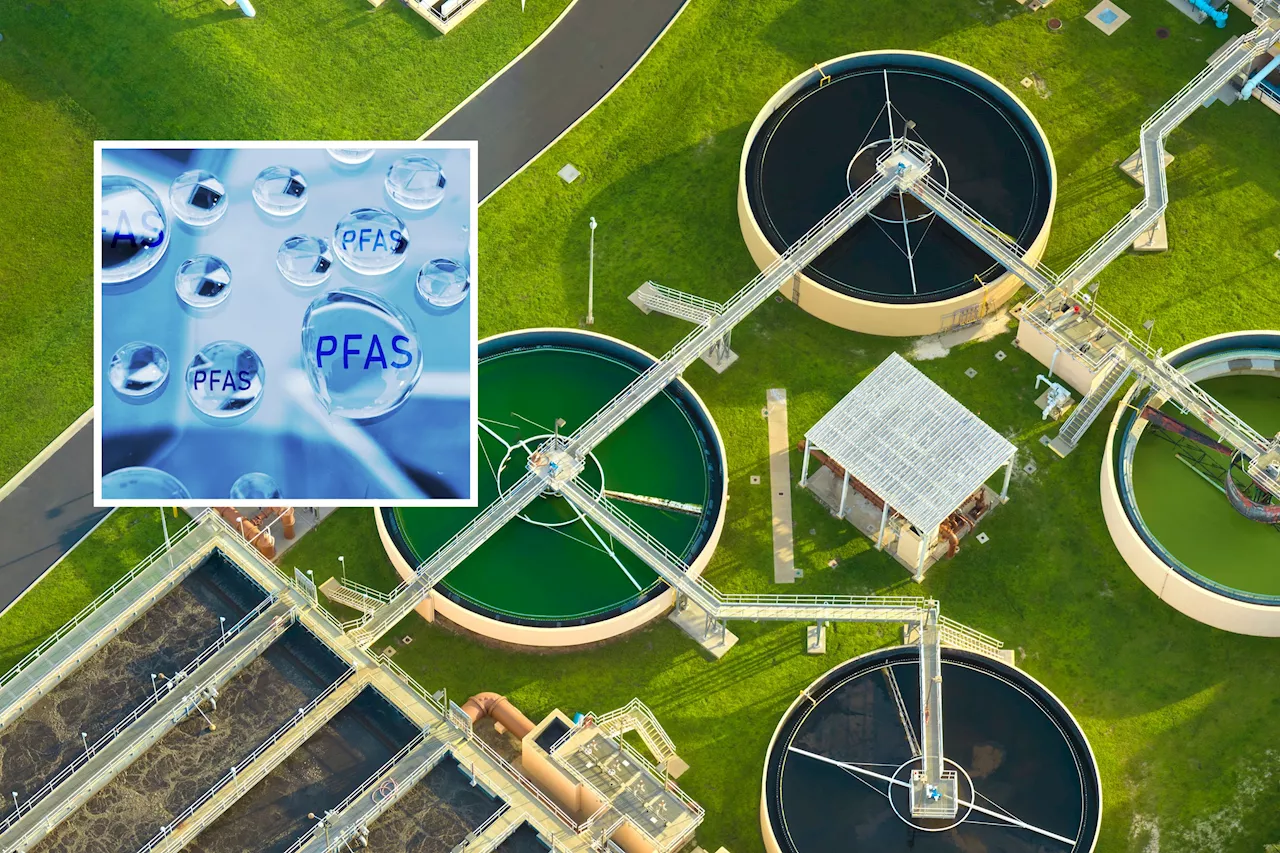A University of Missouri researcher has developed a cost-effective and sustainable method for removing PFAS, or 'forever chemicals,' from drinking water. The technique involves heating PFAS with granular activated carbon at a relatively low temperature, achieving a high level of PFAS mineralization.
A researcher at the University of Missouri has discovered a groundbreaking method to remove so-called ' forever chemicals ' known as PFAS from drinking water . Per- and polyfluoroalkyls ( PFAS ) are a group of industrial chemicals used in a wide range of products, including cosmetics, carpeting, non-stick cookware, stain-resistant fabrics, firefighting foams, food packaging, and waterproof clothing.
Their persistence in the environment, along with their potential health effects, has raised significant concerns. Studies have linked PFAS exposure to decreased fertility, developmental delays in children, and an increased risk of certain cancers. These chemicals are incredibly durable, taking hundreds or even thousands of years to break down naturally. For the past decade, researchers have been actively searching for effective ways to remove PFAS from the environment or at least degrade them into harmless compounds. Feng 'Frank' Xiao, an associate professor in Mizzou's College of Engineering, and his team have made a significant advancement in this field. Xiao's innovative method utilizes readily available materials and common tools. Instead of relying on expensive organic solvents or extremely high temperatures, the team heated PFAS with granular activated carbon (GAC) at 572 degrees Fahrenheit. GAC, a material composed of granules derived from coal, wood, or other carbon-rich sources, is commonly used for filtering contaminants from water and air. This relatively simple process resulted in a remarkable 90% mineralization of the PFAS, transforming the 'forever chemicals' into harmless, inorganic fluorine. Previous methods requiring temperatures exceeding 1292 degrees Fahrenheit, high pressure, or solvents have proven to be less efficient and sustainable.Xiao's discovery holds immense potential for managing PFAS-contaminated solid wastes, biosolids, and spent adsorbent media, addressing a major concern for farmers and communities. 'In the Midwest, we use a lot of herbicides and give animals a lot of pharmaceuticals,' Xiao said. 'These substances can contain high amounts of PFAS. Through this new removal method, we can drastically reduce the compounds' presence in our lives.' This breakthrough technology could significantly improve water quality and contribute to a healthier environment.
PFAS Forever Chemicals Drinking Water Granular Activated Carbon Water Treatment Environmental Remediation University Of Missouri Feng 'Frank' Xiao
United States Latest News, United States Headlines
Similar News:You can also read news stories similar to this one that we have collected from other news sources.
 Stop stress in its tracks with a simple method for lasting calm.A simple tally counter trick can intercept stress, calm your nerves, and keep your bucket from overflowing—all while cultivating lasting well-being.
Stop stress in its tracks with a simple method for lasting calm.A simple tally counter trick can intercept stress, calm your nerves, and keep your bucket from overflowing—all while cultivating lasting well-being.
Read more »
 Run-Walk Method: A Simple Strategy for Injury-Free RunningDiscover the run-walk method, a proven technique developed by Jeff Galloway, that helps runners of all levels achieve their goals while minimizing the risk of injury. Learn how this approach works and why it's favored by both beginners and experienced runners.
Run-Walk Method: A Simple Strategy for Injury-Free RunningDiscover the run-walk method, a proven technique developed by Jeff Galloway, that helps runners of all levels achieve their goals while minimizing the risk of injury. Learn how this approach works and why it's favored by both beginners and experienced runners.
Read more »
 Anna Webber's Simple Trio Is Anything but Simple InstrumentalsExperience a night of complex flute, saxophone, piano and drums, all composed by Anna Webber.
Anna Webber's Simple Trio Is Anything but Simple InstrumentalsExperience a night of complex flute, saxophone, piano and drums, all composed by Anna Webber.
Read more »
 Fluorinated Drugs, a Type of PFAS, Contaminate Drinking Water for 23M in USFearless Independent Journalism
Fluorinated Drugs, a Type of PFAS, Contaminate Drinking Water for 23M in USFearless Independent Journalism
Read more »
 Forever Chemicals in Drinking Water: Millions Exposed Through WastewaterA new study reveals that up to 7% of Americans may be ingesting 'forever chemicals' (PFAS) through their drinking water due to inadequate removal during wastewater treatment. The study, published in the Proceedings of the National Academy of Sciences, found that prescription drugs are a major contributor to PFAS contamination in wastewater, making up 75% of these organic fluorine compounds. Even advanced treatment methods remove less than 25% of PFAS before they are discharged into waterways, potentially exposing millions to these harmful substances.
Forever Chemicals in Drinking Water: Millions Exposed Through WastewaterA new study reveals that up to 7% of Americans may be ingesting 'forever chemicals' (PFAS) through their drinking water due to inadequate removal during wastewater treatment. The study, published in the Proceedings of the National Academy of Sciences, found that prescription drugs are a major contributor to PFAS contamination in wastewater, making up 75% of these organic fluorine compounds. Even advanced treatment methods remove less than 25% of PFAS before they are discharged into waterways, potentially exposing millions to these harmful substances.
Read more »
 Trump Administration Withdraws PFAS Drinking Water Limits, Citing 'Public Health Crisis'The Trump administration has withdrawn the Biden administration's proposal for limiting PFAS discharges from industrial chemical plants, citing a 'public health crisis'. Environmental groups denounced the move, saying it delays critical federal standards and gives polluters a 'green light' to continue poisoning water supplies. The Biden administration's proposal would have set federal limits on the amount of four types of PFAS allowed in drinking water and given utilities five years to meet the new standards.
Trump Administration Withdraws PFAS Drinking Water Limits, Citing 'Public Health Crisis'The Trump administration has withdrawn the Biden administration's proposal for limiting PFAS discharges from industrial chemical plants, citing a 'public health crisis'. Environmental groups denounced the move, saying it delays critical federal standards and gives polluters a 'green light' to continue poisoning water supplies. The Biden administration's proposal would have set federal limits on the amount of four types of PFAS allowed in drinking water and given utilities five years to meet the new standards.
Read more »
